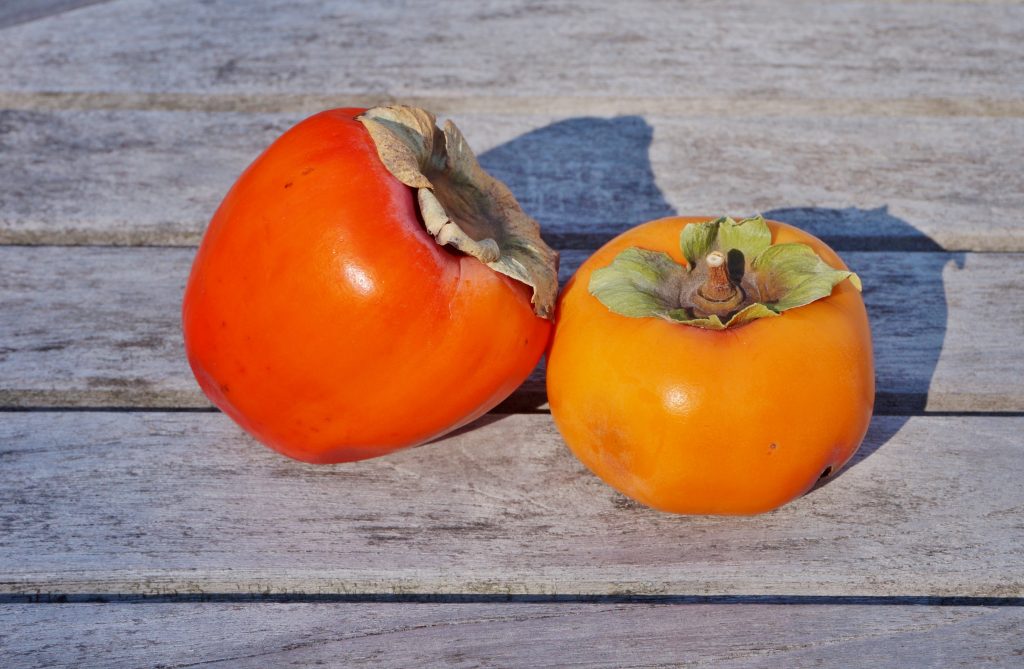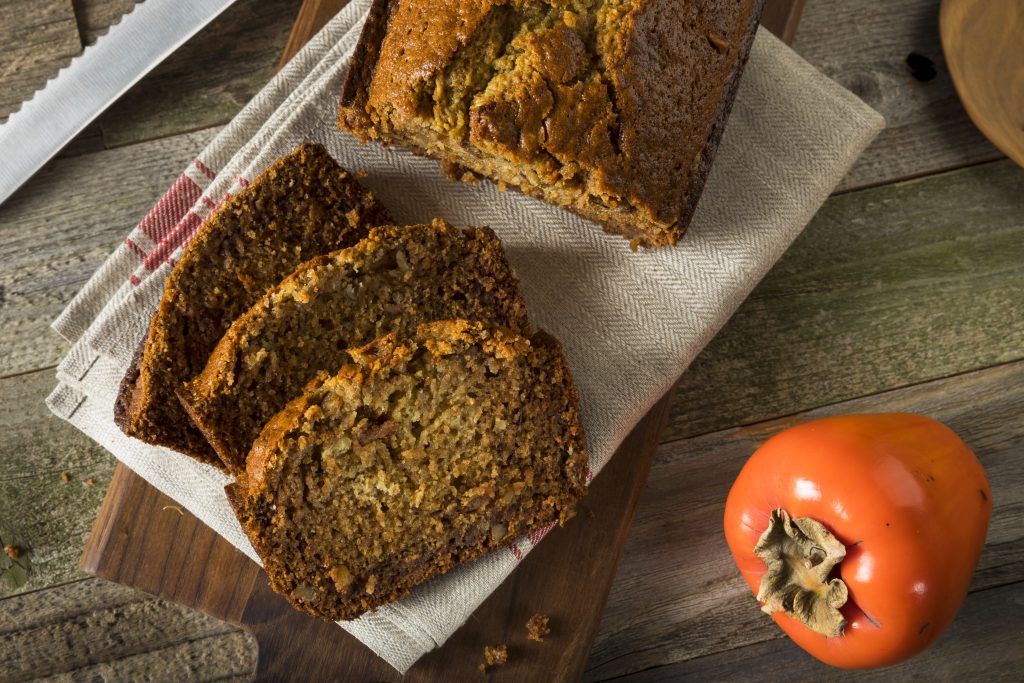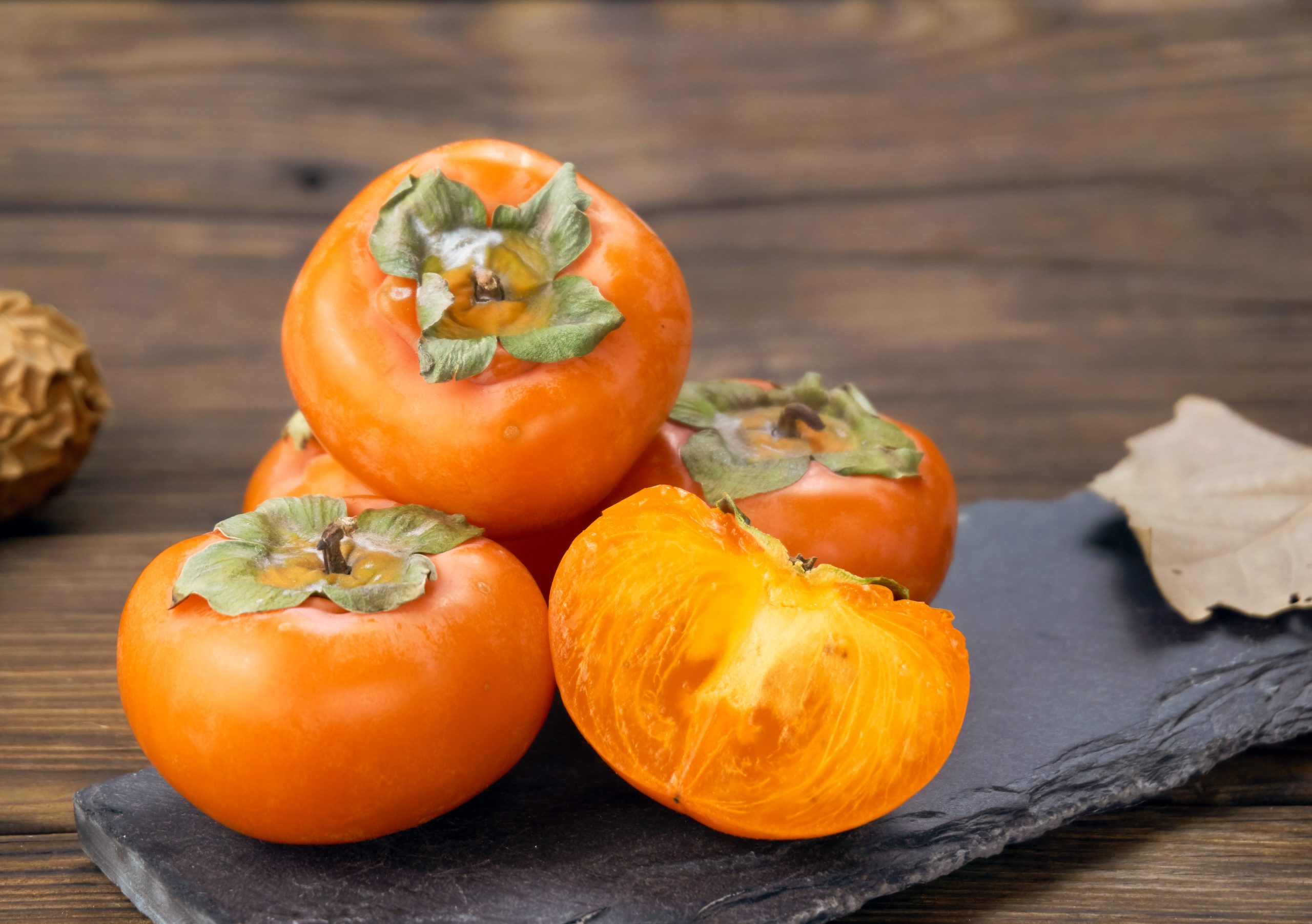Persimmons are delicious, vibrant fruits known for their unique sweet flavor and smooth, jelly-like texture. With their rich orange color and distinct taste, persimmons are a popular fruit choice and are enjoyed both fresh and in various culinary preparations.
Table of Contents
What is a Persimmon?
Persimmon (Diospyros kaki) is an edible fruit belonging to the genus Diospyros, part of the larger family Ebenaceae. It is commonly known as a persimmon, but it is also referred to by other names in different parts of the world.
Persimmons are native to East Asia and have been cultivated in China, Japan, Korea, and other neighboring countries for centuries. They were later introduced to other parts of the world, including North America, where they are grown in various regions.
Visually, persimmons are known for their vibrant colors and unique appearance. They come in different shapes and sizes, but the most commonly encountered variety is round or slightly flattened with smooth, glossy skin.
The color of the skin can range from pale yellow to deep orange or reddish-orange, depending on the ripeness and variety. Some persimmons may also have imperfections or streaks of darker color. When ripe, the fruit becomes soft and has a custard-like texture.
In terms of flavor, persimmon fruit are known for their sweet and rich taste. Unripe persimmons can have a tannic and astringent taste, leaving a dry sensation in the mouth. As the persimmon matures and becomes fully ripe, it develops a delightful sweetness with hints of honey, apricot, and sometimes a touch of spice.
It’s worth mentioning that there are different cultivars of persimmons, each with its distinct characteristics. Some popular persimmon varieties include Fuyu, Hachiya, and American persimmon.
The Fuyu persimmon is known for its crisp texture and can be eaten when still firm, similar to an apple. The Hachiya variety is more elongated and needs to be fully ripe and soft before consumption to avoid astringency. American persimmons are smaller and have a stronger, more robust flavor.
The History of Persimmons
Brought to the United States shores from the distant coasts of Japan by Admiral Perry in 1851, Japanese persimmons embarked on a journey that would transform American agriculture and gastronomy. This hardy tree found its place under the Californian sun and the Georgian warmth after unsuccessful attempts to acclimatize in the chilly Washington winters of 1828.
Writings by William Bartram, an American botanist, document the intimate relationship between the Native American tribes and their cherished native persimmon trees, ‘Diospyros virginiana.’ Found flourishing in the fields and feeding the fauna, these trees were celebrated for their healthy fruits.
Despite over a thousand cultivars of Japanese persimmon trees available from Japan, only a few have been proven to flourish in American soils, including the Fuyu, Hachiya, and Eureka. In the early 20th century, Professor Harold Hume from the University of Florida initiated an experimental cultivation program. In time, over 22,000 persimmon trees flourished in Florida alone.
While some scholars debate whether the Japanese persimmon initially hailed from China, such discussions often prove irrelevant. Undeniably, persimmon trees play a significant role in today’s agriculture and landscaping.
The Native American persimmon, discovered by Captain John Smith in Virginia in 1609, and endorsed by Presidents George Washington and Thomas Jefferson, continues to thrive in the diverse American forests.
What Does a Persimmon Taste Like?
A persimmon’s taste can vary depending on its variety and ripeness. You may come across two main types of persimmons: Hachiya and Fuyu.
Raw Hachiya persimmons are known for being incredibly astringent when they’re not fully ripe, a feature that can make your mouth feel dry and puckered due to the high tannin content. However, once they become mature and jelly-like, Hachiya persimmons develop a sweet, rich flavor often compared to honey. The texture becomes custard-like, which can be a unique experience for those unfamiliar with the fruit.
On the other hand, Fuyu persimmons are non-astringent and can be eaten while still firm. They have a sweet, mildly spicy flavor with hints of cinnamon and brown sugar. They have a crunchy texture, similar to an apple when not fully ripe. They soften as they ripen, and their flavor intensifies, taking on a sweeter and richer tone.
In both cases, persimmons are often described as having a hint of spice, similar to a blend of mango and sweet roasted squash.
When cooked, persimmons undergo a transformation that can accentuate their sweetness and bring forward a flavor profile often compared to dates or caramel. Baking or roasting persimmons can give them a slightly crispy exterior and a soft, sweet interior.

How to Tell When Persimmon is Ripe
To determine if a persimmon is ripe, you can consider the following characteristics:
| Texture | When gently pressed, a ripe persimmon will have a soft and yielding texture. Avoid firm or hard persimmons as they are likely unripe. |
| Firmness | Ripe persimmons should be slightly soft to the touch. However, be cautious of overly mushy or excessively squishy fruits, as they may be overripe or spoiled. |
| Scent | A ripe persimmon often emits a sweet and fragrant aroma. Sniff the fruit to check for a pleasant scent. It may not be ripe if no discernible aroma or unpleasant smells exist. |
| Color | Depending on the persimmon variety, ripe fruits can range from a deep orange to a reddish-orange hue. Look for vibrant and uniform coloration, as this indicates ripeness. |
Note: Depending on the variety, persimmons can vary in ripening time and characteristics, so it’s helpful to become familiar with the specific type of persimmon you purchase.
What Is The Difference Between A Persimmon And A Date?
Persimmons and dates are sweet fruits from different parts of the world, each with unique characteristics.
First, persimmons are a fruit from the Ebenaceae family, with various kinds of persimmons. Still, the most common are the American persimmon (Diospyros virginiana) and the Japanese persimmon (Diospyros kaki). On the other hand, dates come from the date palm (Phoenix dactylifera) and are native to the Middle East and Northern Africa.
Similarities
- Both are sweet fruits with a high sugar content and a significant amount of dietary fiber.
- Both can be eaten fresh or dried and used in various dishes, including desserts.
- Both have edible skins.
Differences
- Persimmons are more extensive and are usually bright orange when ripe, while dates are smaller and dark brown.
- Persimmons have a sweet, honey-like flavor and a custard-like texture when ripe, whereas dates have a sweet, caramel-like flavor and a chewy texture.
- Persimmons contain high amounts of vitamins A and C, while dates are rich in potassium and B vitamins.
- Persimmons are native to East Asia and North America, while dates originate from the Middle East and Northern Africa.
- The center of the date contains a single large seed, whereas a persimmon can have several smaller seeds.
- Dates are typically more calorically dense due to their higher sugar content than persimmons.
Why Do Persimmons Make Your Mouth Feel Dry?
Some people may experience a dry and puckering sensation in their mouths when consuming certain varieties of persimmons, especially if they are not fully ripe. This dryness is primarily caused by the presence of tannins in persimmons.
Tannins are a plant compound responsible for certain fruits’ astringent taste and mouth-drying effect. They are natural polyphenols found in various parts of plants, such as the skin, seeds, and stems. Tannins serve a protective role for the plant, helping to deter pests and herbivores from consuming them.
In unripe persimmons, the tannin content is higher and more concentrated. As a result, when you bite into an unripe persimmon or consume its flesh, the tannins come into contact with the proteins and mucous membranes in your mouth. This interaction causes the proteins to bind and constrict, resulting in a dry and puckering sensation.
However, it’s important to note that not all persimmons have high tannin content. There are two main types of persimmons: astringent and non-astringent. Non-astringent persimmons, like the Fuyu variety, have lower tannin levels even when unripe, so they can be eaten while still firm and crisp without causing the same dryness.
To mitigate the mouth-drying effect of astringent persimmons, some people prefer to consume them when fully ripe, as the tannin levels decrease significantly, resulting in a sweeter and less astringent taste.
Cooking with Persimmon
Persimmon is a delightful fruit with a sweet and slightly tangy flavor. Before using persimmons in cooking, it’s essential to prepare them properly:
- Select ripe persimmons: Choose persimmons that are fully ripe but still firm. Ripe persimmons should be orange-red and feel slightly soft when gently pressed.
- Wash and remove the stem: Rinse the persimmons under cool water to remove dirt or debris. Cut off the stem with a sharp knife.
- Peel or leave the skin: The skin of persimmons can be eaten, but it can be slightly astringent and might affect the taste. You can peel the fruit using a vegetable peeler or leave the skin intact.
Persimmons are often used in Asian cuisines, particularly in Japan and Korea. In Japan, persimmons are often dried to make hoshigaki (dried persimmon), a popular snack. Korean cuisine uses persimmons in salads, desserts, and traditional medicinal teas.

Here are some specific recipes involving persimmons:
Persimmon bread: The beauty of this bread is that it walks that delicious tightrope between dessert and breakfast without breaking a sweat.
Persimmon cookies: If you thought cookies couldn’t get any better, let me introduce you to these little gems. With a spiced, sweet flavor that’s pure autumn in a bite
Persimmon sweet potato soup: The sweet, earthy blend of persimmon and sweet potato offers a comforting solace, perfect for those chilly evenings.
Broiled salmon with persimmon-lime salsa: This dish is the wild card of the persimmon world. It’s bold, adventurous, and tantalizingly tangy. The rich salmon dances beautifully with the zesty salsa, and the persimmon adds a sweet twist, making this dish a culinary plot twist.
How to Store Persimmons
When it comes to persimmons, these are the best storage methods:
| On the Counter | Persimmons can be stored at room temperature until fully ripe. Shelf life is usually 1-2 weeks. |
| In the Fridge | Once ripe, you can refrigerate persimmons to slow the ripening process and extend their shelf life. They can last for about three weeks. |
| Frozen | Fully ripe persimmons can be peeled, sliced, and stored in the freezer. When stored properly, they can last up to a year. |
| Dried | Dried persimmons can be stored in a cool, dry place for up to 6 months. |
Nutritional Benefits of Persimmons
Persimmons are a nutritional powerhouse packed with essential vitamins, minerals, and antioxidants, all contributing to overall well-being. Their high level of vitamin C not only strengthens the body’s defense mechanism but also guards against cardiac ailments.
They contain an impressive amount of soluble dietary fiber that ensures a slow and steady release of carbohydrates into the body, mitigating any abrupt increase in glucose levels.
Persimmons have demonstrated the potential to maintain arterial health, thus lessening the likelihood of heart conditions. Their high fiber content, teeming with antioxidants and minerals, promotes an anti-atherosclerotic dietary pattern.
Additionally, the abundance of tannin-rich fiber in persimmons plays a significant role in managing elevated cholesterol levels.
Persimmons are also pivotal in maintaining ocular health. They offer over half of the daily recommended intake of vitamin A, a vital nutrient for eye health. The skin of this fruit is particularly rich in lutein, a compound known to shield against ocular diseases.
Where to Purchase Persimmons
Larger grocery stores may carry persimmons, especially during fall and early winter. Also, check your local farmers’ market in the late fall if you’re in an area where persimmons grow.
Persimmons are commonly used in many Asian cuisines, particularly in Korea, China, and Japan. As such, you may have the most luck finding them in Asian supermarkets, where they might be available outside their typical ripening season.

